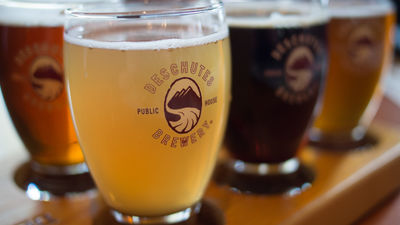Even if craft beer is kept refrigerated, fragrance drops considerably in 3 months

by Elevate
A technique called "dry hopping" which adds a strong aroma by adding hops to nearly completed beer is often used in craft beer (local beer) to produce individual beers, but its fragrance lasts a long time The survey revealed that it is not what it does.
Store craft beer in a cool place and consume it as fresh as possible
https://www.leibniz-lsb.de/en/press-public-relations/pressemitteilungen/pm-20190114-pressemitteilung-craft-beer/

Store craft beer in a cool place and consume it as fresh as possible: What changes when beer ages - ScienceDaily
https://www.sciencedaily.com/releases/2019/01/190114114234.htm
In the United States industry bodies Brewers Association, craft beer brewery (craft · brewery) is defined as meeting the three conditions "small scale", "independent" and "traditional". Even if the details of the definition were modified in 2014, this framework did not shake.
"Small scale" means that the annual production volume is 6 million barrels or less. Since the barrel for American beer is stronger than 117 liters, 6 million barrels is equivalent to about 700 million liters (about 700 megliters). However, it is said that the regulation of 6 million barrels is controversial, with the definition amendment in 2014 added a note that "About 3% of annual sales in the USA".
"Independent" means that the proportion is less than 25% when the brewery is owned and managed by the drink alcohol industry, which is not a craft · brewery. In other words, 75% of the brewery needs to be owned and managed by stakeholders.
"Traditional" means that most of the beer produced by brewery is derived from traditional or innovative brewing ingredients and its fermentation. For this item, it is stipulated that "flavor malt beverage (FMB) is not beer" specifically.
In these craft brewery, various craft beers are produced, one of the scenting techniques used there is "dry hopping" where hops are directly input in the final process of beer making. In this process, 4-mercapto-4-methyl-2-pentanone plays a major role, even a quantity of just a few nanograms per liter affects the scent of beer.
Martin Steinhaus and Mr. Klaus Leglitz of the Leibniz-Food Systems Biology Institute, Munich Institute of Technology, investigated how aroma components change during beer storage.

by Wade Austin Ellis
The beer used was dried yeast filtered dry hop craft beer and unfiltered dry hop craft beer stored for 6 months at 5 degrees Celsius and 20 degrees Celsius, respectively. At the start of the survey, the filtered beer contained 22 ng per kg and the unfiltered beer contained 15 ng of aroma component per kg.
Three months after the start of the survey, the aroma component of beer stored at 5 degrees decreased to 59% of filtered beer and 67% of unfiltered beer. When it was 20 degrees, the fragrance further decreased, 30% with filtered beer and 40% with unfiltered beer.
Six months after the start of the survey, the fragrance component of all samples decreased significantly, and in some cases it decreased to only 2 ng per kg.
This research result is published in the academic journal · Brewing Science.
Related Posts:
in Junk Food, Posted by logc_nt







